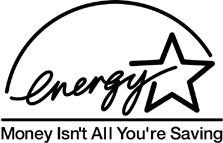What are the best light bulbs to use in these fixtures?
Fluorescent tubes, when properly selected, offer many advantages over common incandescent bulbs. They are cooler to touch, they spread light over large areas without excessive glare, and they last 10 to 20 times longer than incandescent bulbs. They will also reduce the electric bill because they use only 20 to 30% as much energy as incandescent bulbs for the same amount of light. Most fluorescent tubes made today do not have the problems of the
older fluorescent tubes. Fluorescent tubes are available with excellent color, plenty of light, and no buzz or flicker, and they do not cause headaches. To take advantage of the benefits of fluorescent lighting:
- Choose fixtures designed for fluorescent tubes or compact fluorescent bulbs.
- Request T8 fluorescent tubes with an electronic ballast (See the sidebar "What should one ask for to get good fluorescent lighting?" as well as manufacturers' websites to get more information
on fluorescent tubes).
- Use compact fluorescent bulbs that have a screw-in base to replace conventional incandescent light bulbs in your existing fixtures, but be sure it fits! Just because it screws in to the socket does not mean it will fit or it will not cause glare. Select a compact fluorescent bulb that is about 1/3 the wattage of the
incandescent bulb that it replaces.
- Dimming controls can be used in the light switch to vary the light level in the room. Dimmable compact fluorescent bulbs are available to be used with incandescent dimmers. Fluorescent tubes should not be put on a dimmer unless it is a dimming system specifically made for fluorescent tubes.
- Some floor and table lamps are designed to use a modified, white, "parking-lot" light bulb to get high light levels in task areas. These metal halide bulbs put out five or six times the amount of light as an incandescent bulb of the same wattage. Metal halide bulbs take several minutes to come up to full brightness, but they produce a lot of light and good color.
| Select fixtures designed to use what is termed "pin base" fluorescent tubes (a). The ENERGY STAR label (b) on light fixtures helps you identify these fixtures. Screwbase compact fluorescent bulbs (c) can often replace traditional light bulbs for general lighting. |






